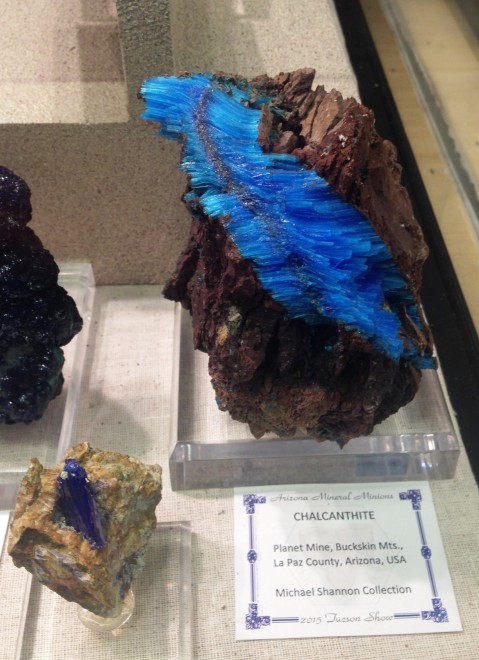In February, Peter Davidson (Senior Curator, Mineralogy) and I attended the annual Tucson Gem & Mineral Show. This is currently the largest mineral show in the world… full of the biggest, the newest, the bargains, and the rare. Mineral and gem dealers, head curators of all the major national Museums, and collectors both professional and amateur abound, often arriving weeks in advance.
The buying and selling of minerals primarily takes place prior to the show in motel rooms rented out by dealers. However, the official show is the place to see the biggest and the best; truly amazing minerals that we wish we could afford!
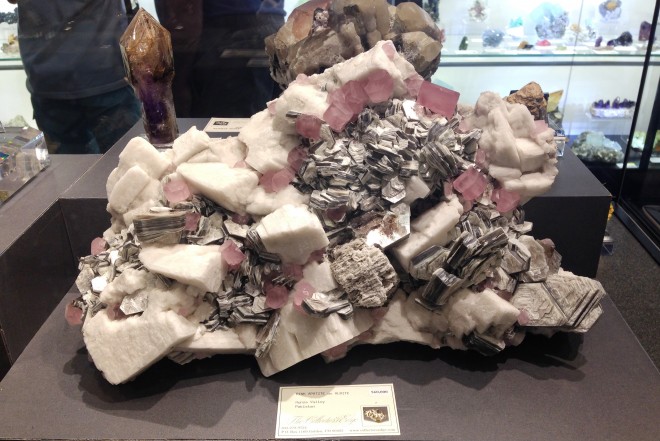
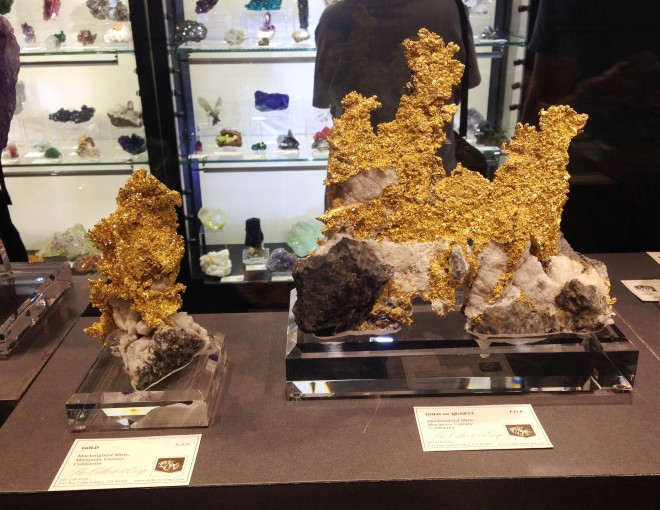
This year Pete, who has been visiting the show for many years, had been invited to put on a display of minerals of Western Europe on behalf of National Museums Scotland as part of the official show. He chose to focus on the minerals associated with the element Strontium as 2015 is the 225th anniversary of its discovery. The element was named after the West Highland village of Strontian (Sron an t-sithein) in western Lochaber and is found in a number of attractive and unusual minerals. Naturally, National Museums Scotland has a particularly good range of specimens from this locality.
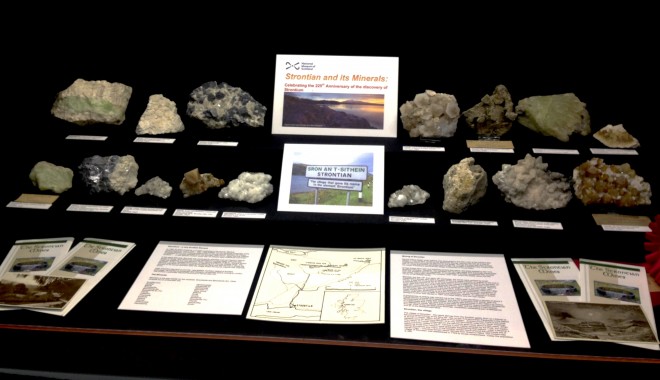
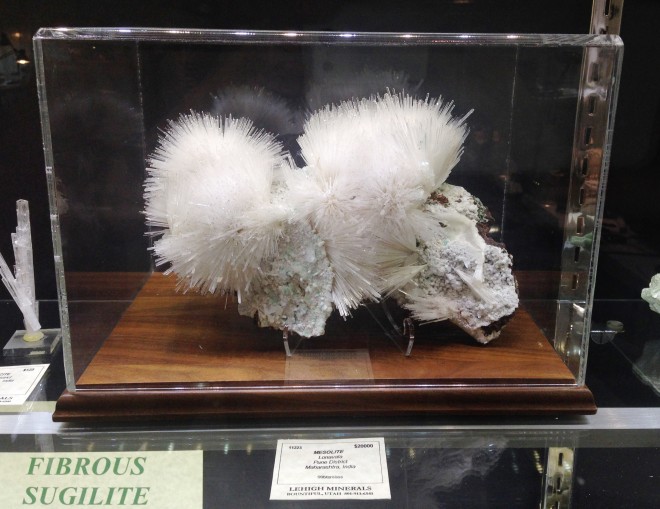
I, on the other hand, had a small budget to acquire a number of rare minerals, focusing on rare, earth-rich minerals. Many of these minerals have become the focus of research projects as they contain elements that are a crucial part of e-technologies (e.g. mobile phones). I was a Co-Investigator on a recent NERC Critical Elements Catalyst Grant (2012-2014) together with researchers at the University of Edinburgh and the University of Leeds. At National Museums Scotland we have about 30% of all known REE-rich minerals so are keen to develop this important collection further.
